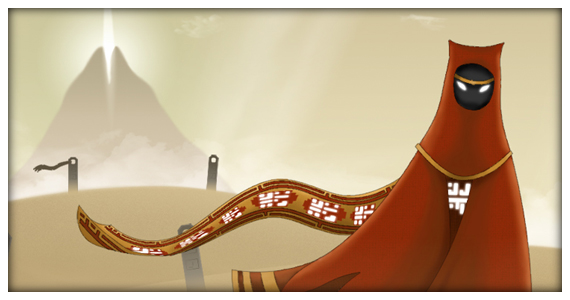I really appreciate the work in the area of indie games. Every month we can see good examples of different kind of games in this field.
Some indie games have a very particular way of showing their gameplay. Some have a traditional interface, but others have very different ways of displaying their properties. The game
Journey (2012) is one such example.
Journey is a video game developed by Thatgamecompany for PlayStation 3. In the game, the player controls a robed figure in a vast desert, journeying towards a mountain in the distance. Other players on the same journey can be discovered, one at a time, along the way; the two players can then assist each other, but are not allowed to communicate via speech or text and are not shown each other's names.
The only form of communication between the two players is through wordless "singing". This noise also imbues floating pieces of cloth found throughout the levels with magic powers, affecting the game world. The robed figure wears a trailing scarf which, when charged by approaching floating pieces of cloth, briefly allows the player to fly.
 Journey
Journey was intended by the developers to evoke in the player a sense of smallness and wonder, and to forge an emotional connection between them and the anonymous players they meet along the way.
So we can say that
Journey is a trip inside a gameplay. It's a different idea of game (like many others of the same kind) because it balances art (or introspective reflexion) and game. You can appreciate this game as an art framework, but your television is the museum.
With the constant growing of the gaming industry, I think we'll have more and more room to create experimental games like this one. With the expansion of the gaming field we can think outside the box to create new experiences beyond the traditional first person shooters or traditional side-scrolling games.
The indie games area looks perfect for this. Let's try this theory in our own games.





